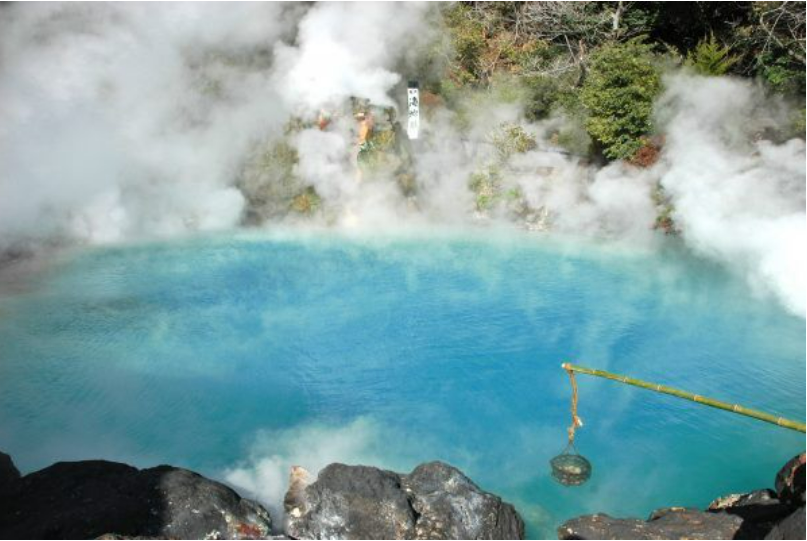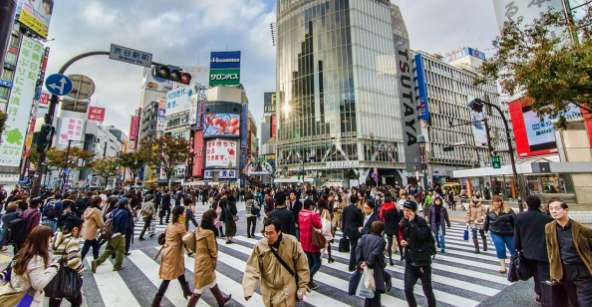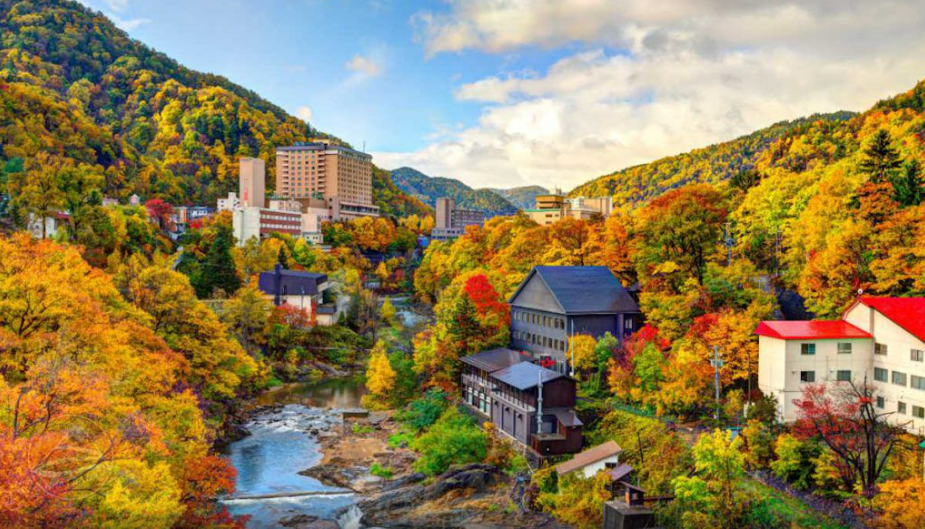How to bathe in an authentic Japanese Onsen – Tips to fully enjoy the hot springs
Date: 2025.10.27
Have you ever heard of Onsen – a unique cultural feature of Japan where people gather to relax, heal, and reconnect with nature? But do you know the proper Japanese way to bathe in an onsen to fully enjoy the experience? This article will guide you from A to Z, along with useful tips to help you have the perfect onsen experience!
What is Onsen? Why is it so famous?
Formed by underground volcanic activity, Onsen water is rich in minerals like iron, magnesium, and sulfur — known for their powerful health and skin benefits.
For centuries, Japanese people have treated onsen bathing not merely as cleansing but as a cultural ritual of renewal — a way to relax the mind, relieve fatigue, and rejuvenate the body.

1. Preparation before entering the Onsen
Choosing the right Onsen
In Japan, there are various types of onsen: public onsen, onsen inside hotels, or outdoor onsen called rotenburo. Depending on your preferences and schedule, you can choose a suitable location. However, be aware that many onsen have strict rules regarding tattoos and gender (with separate bathing areas for men and women).
Personal hygiene
The golden rule of Onsen etiquette: always wash your body thoroughly before entering the bath.
Use soap and rinse completely — no shampoo, lotion, or cosmetics should enter the water.
Attire
Swimsuits are not allowed. Bathing is done nude, using only a small towel (tenugui) to cover yourself while walking. And never put this towel into the bath — place it on your head or beside the tub.
2. Authentic Japanese Onsen bathing procedure
Step 1: Change clothes and store your belongings
When you arrive at the onsen area, you will be provided with a changing room or secure lockers to store your clothes and bags.
Step 2: Thoroughly wash yourself before entering the bath
Sit on a small stool beside the shower, and use the showerhead or bucket to wash your entire body thoroughly. Make sure no soap or dirt remains on your skin before stepping into the bath.
Step 3: Soak in the Onsen bath
Ease yourself into the bath gradually, starting with your feet. Soak for about 10-15 minutes, avoiding staying too long to prevent dizziness or dehydration. Keep quiet, avoid splashing, and relax. The onsen is a place of tranquility.
Step 4: Exit the bath and relax
After soaking, lightly pat your skin dry — do not rewash with soap. Sit down, rest for a few minutes, and drink water to rehydrate.
3. Health benefits of bathing in Onsen
Bathing in mineral-rich hot springs offers numerous physical and mental health benefits that modern science increasingly supports:
Stress relief and improved deep sleep
Warm water soothes the nervous system, reduces anxiety, and promotes deep, restful sleep.
Your body releases endorphins — natural “happy hormones” — helping you unwind completely.
Relief from muscle and joint pain
The heat from the onsen water helps relax muscles and reduce aches caused by muscle fatigue, arthritis, or back pain. Additionally, minerals such as magnesium and calcium absorbed through the skin support recovery and enhance bone and joint function.
Improved blood circulation and detoxification
Hot water dilates blood vessels, improving oxygen flow and nutrient absorption.
Sweating during your soak flushes toxins naturally through the skin.
Skin beautification, Acne reduction and exfoliation
Onsen water contains rare minerals like sulfur, silica, and sodium bicarbonate, which soften the skin and promote cell regeneration. Prolonged soaking in hot springs also helps remove dead skin cells, reduce acne, and improve skin elasticity, leaving your skin looking radiant and smooth.
Support for mild chronic conditions
Many people report relief from headaches, mild hypertension, digestive issues, and chronic fatigue after consistent onsen bathing.
(Always consult a doctor if you have serious medical conditions.)
4. Tips to Help You Fully Enjoy the Onsen Experience
– Avoid eating too much or bathing on an empty stomach.
– Don’t drink alcohol before or during bathing — it increases dehydration risk.
– Consult your doctor if you’re pregnant or have heart disease or high blood pressure.
– Never dip your towel into the water.
– Keep quiet and respect others’ space.
– Try outdoor onsen (rotenburo) to enjoy stunning natural scenery.
– Combine your visit with massages or relaxation lounges for the ultimate spa day.
5. Recommended Onsen destinations you must try when visiting Japan
If you’re planning to experience onsen in Japan, don’t miss these famous and highly rated locations. Each offers unique characteristics that promise an unforgettable hot spring bathing experience.
Hakone Onsen (Kanagawa)
Just about 1.5 hours by train from Tokyo, Hakone is one of Japan’s most famous onsen areas. With majestic mountain scenery and a variety of mineral springs, Hakone offers stunning outdoor onsen baths—especially beautiful in autumn when the leaves turn vibrant red.
Beppu Onsen (Oita)
Located on Kyushu Island, Beppu is renowned for its numerous hot springs and unique “hells” (Jigoku) where you can witness boiling water and erupting hot mud. Beppu is a paradise for those wanting to try multiple types of onsen all in one place.
Matsunoyama Onsen (Niigata)
Nestled amidst the magnificent mountains of Niigata, Matsunoyama is famous for its natural mineral-rich hot springs with healing properties. Beyond the soothing warm waters, it captivates visitors with peaceful natural surroundings, especially enchanting in winter when snow blankets the area. Matsunoyama Onsen is ideal for those looking to immerse themselves in nature and traditional Japanese onsen culture.
Kusatsu Onsen (Gunma)
Ranked among Japan’s top three hot springs, Kusatsu is famous for its acidic water that naturally disinfects and smooths the skin.
Don’t miss the traditional Yumomi performance — a water-stirring dance ritual.
Noboribetsu Onsen (Hokkaido)
Noboribetsu is Hokkaido’s most famous onsen town, surrounded by beautiful natural scenery and mineral-rich waters. You can enjoy various hot springs with benefits ranging from muscle pain relief to skin treatments, or simply unwind.
Gero Onsen (Gifu)
Considered one of Japan’s top three onsen, Gero is known for its clear, soft water. The area is peaceful, making it perfect for those seeking true relaxation in a tranquil environment.

6. Important things to keep in mind when bathing in Onsen
– Do not let your towel touch the water.
– Avoid entering with open wounds or contagious conditions.
– Keep quiet — loud noises are disrespectful.
– Keep belongings organized; never leave items scattered.
– Tie long hair neatly to prevent it from touching the water.
7. Conclusion
♨️ Bathing in a Japanese Onsen is more than cleansing — it’s a cultural journey that heals both body and spirit. When you understand and follow proper onsen etiquette, you’ll enjoy an experience that is safe, rejuvenating, and deeply authentic.
Don’t hesitate to try it at least once—because after your first time, you’ll want to return to the onsen not only to relieve stress but also to enjoy unforgettable moments of peacefulness in modern life.






